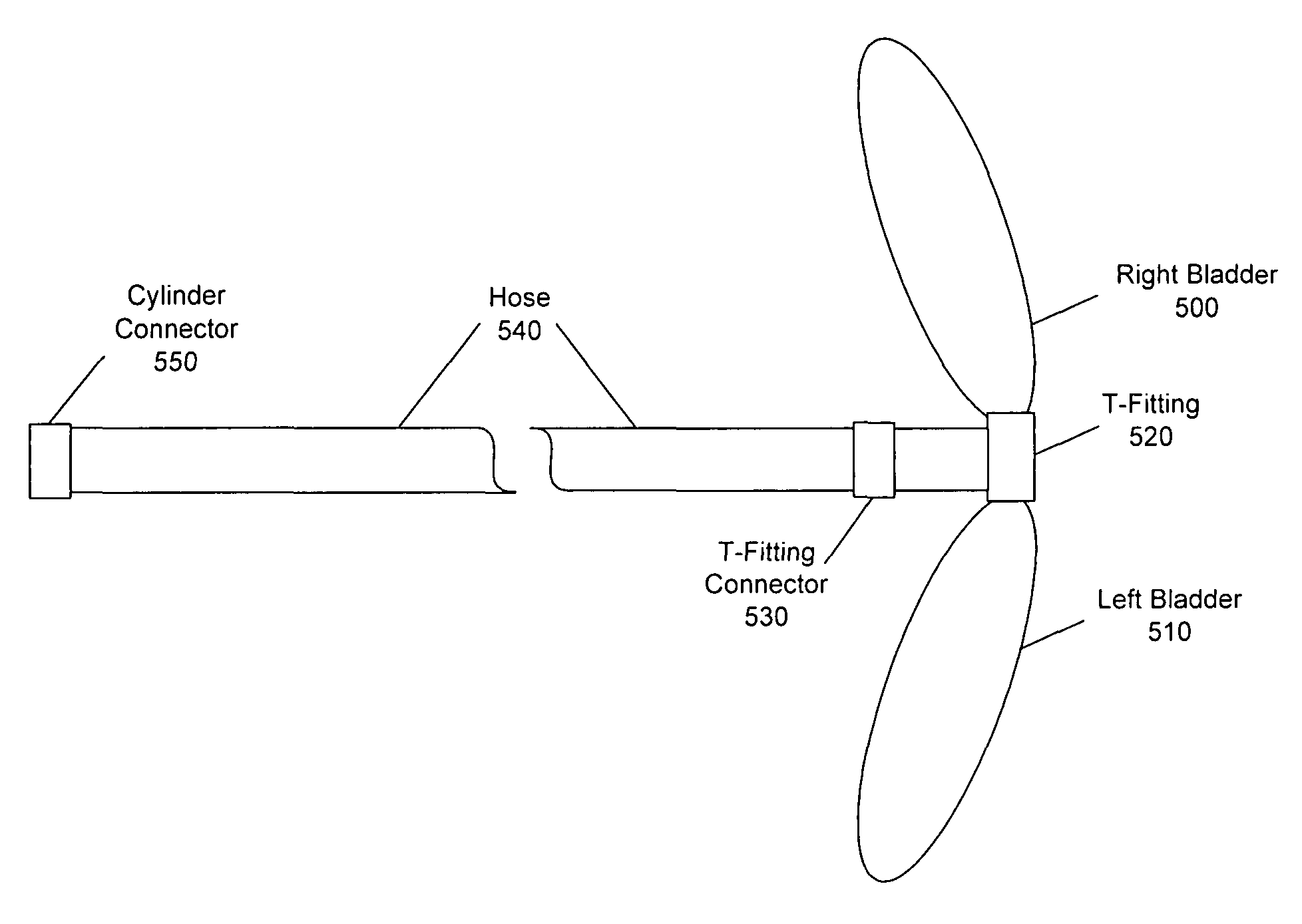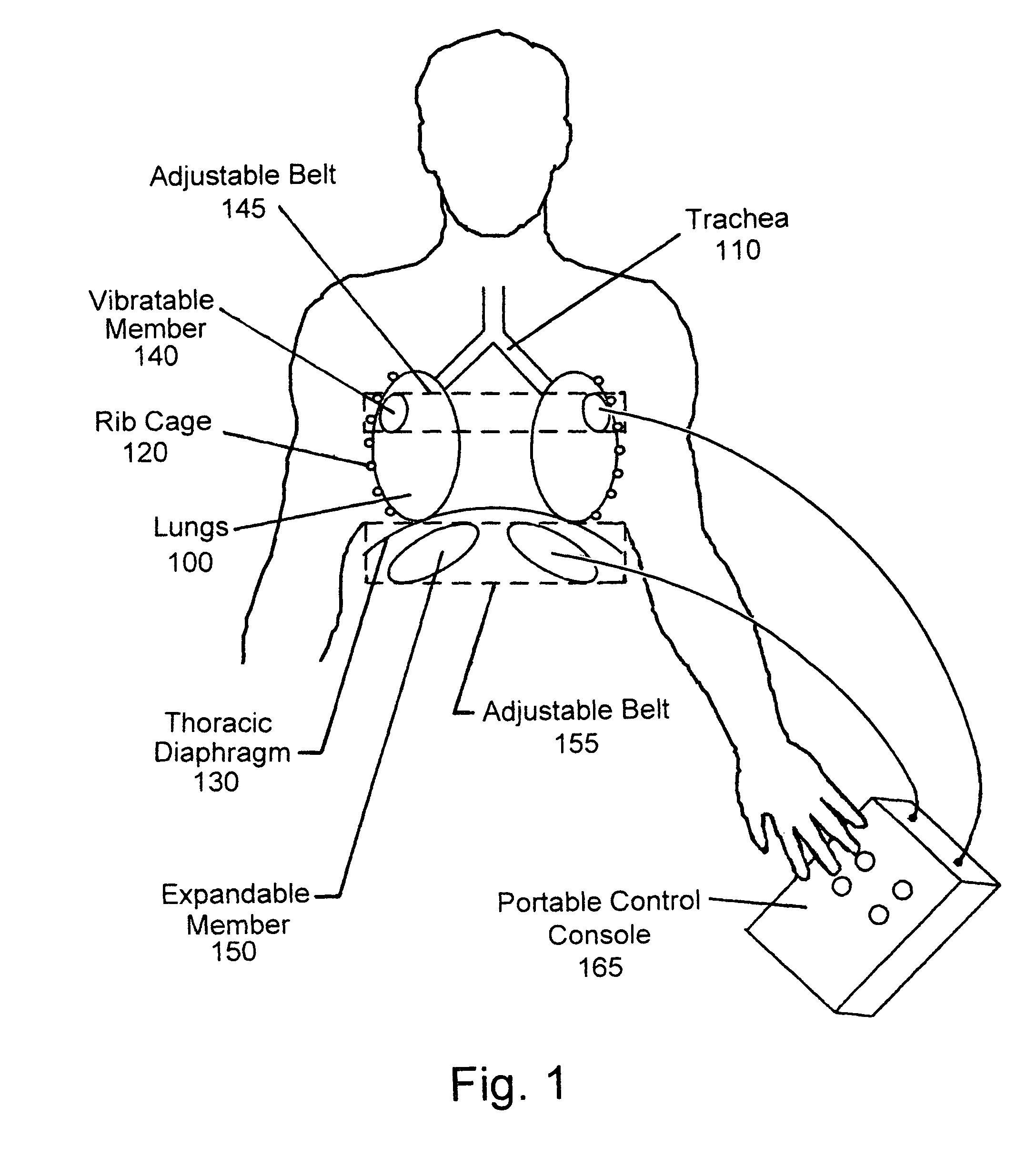Means for clearing mucus from the pulmonary system
a pulmonary system and mucus technology, applied in the field of pulmonary system mucus clearing, can solve the problems of limited success in consuming and discomforting therapy, severe impairment of normal lung function, and reduced respiratory gas exchange, so as to reduce physical stress to the body and improve the potential for optimization
- Summary
- Abstract
- Description
- Claims
- Application Information
AI Technical Summary
Benefits of technology
Problems solved by technology
Method used
Image
Examples
Embodiment Construction
[0011]FIG. 1 illustrates the concept for clearing the lungs (100) and trachea (110) of mucus. The concept is based on the employment of two separately controllable excitations, in combination, to maximize the effectiveness of mucus clearance from the pulmonary system. The first excitation augments the action of the cilia by inducing sustained low-amplitude high-frequency vibrations in the lungs (100). This serves to create continuous oscillatory translational motions of the lung wall relative to the mucus which, in turn, expedites movement of the mucus. Vibration of the lung walls is achieved by employing at least one vibratable member (140) held in contact with the thorax. From a physical perspective, the lung wall behaves essentially like a perfect elastic membrane, while the mucus does not. Accordingly, because the lung wall and mucus respond differently in a vibrational environment, relative motion will occur between them, which creates a boundary layer of lower viscosity mucus ...
PUM
 Login to View More
Login to View More Abstract
Description
Claims
Application Information
 Login to View More
Login to View More - R&D
- Intellectual Property
- Life Sciences
- Materials
- Tech Scout
- Unparalleled Data Quality
- Higher Quality Content
- 60% Fewer Hallucinations
Browse by: Latest US Patents, China's latest patents, Technical Efficacy Thesaurus, Application Domain, Technology Topic, Popular Technical Reports.
© 2025 PatSnap. All rights reserved.Legal|Privacy policy|Modern Slavery Act Transparency Statement|Sitemap|About US| Contact US: help@patsnap.com



